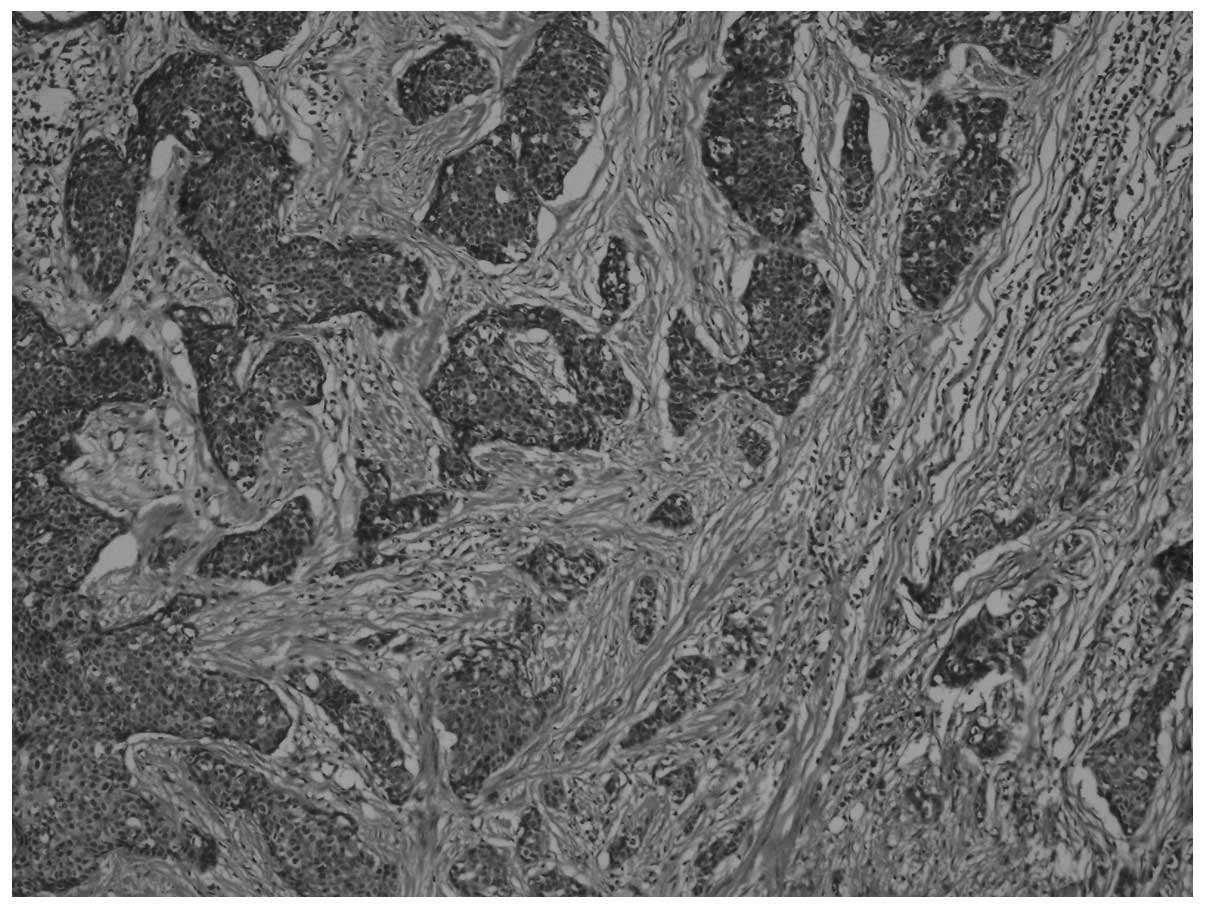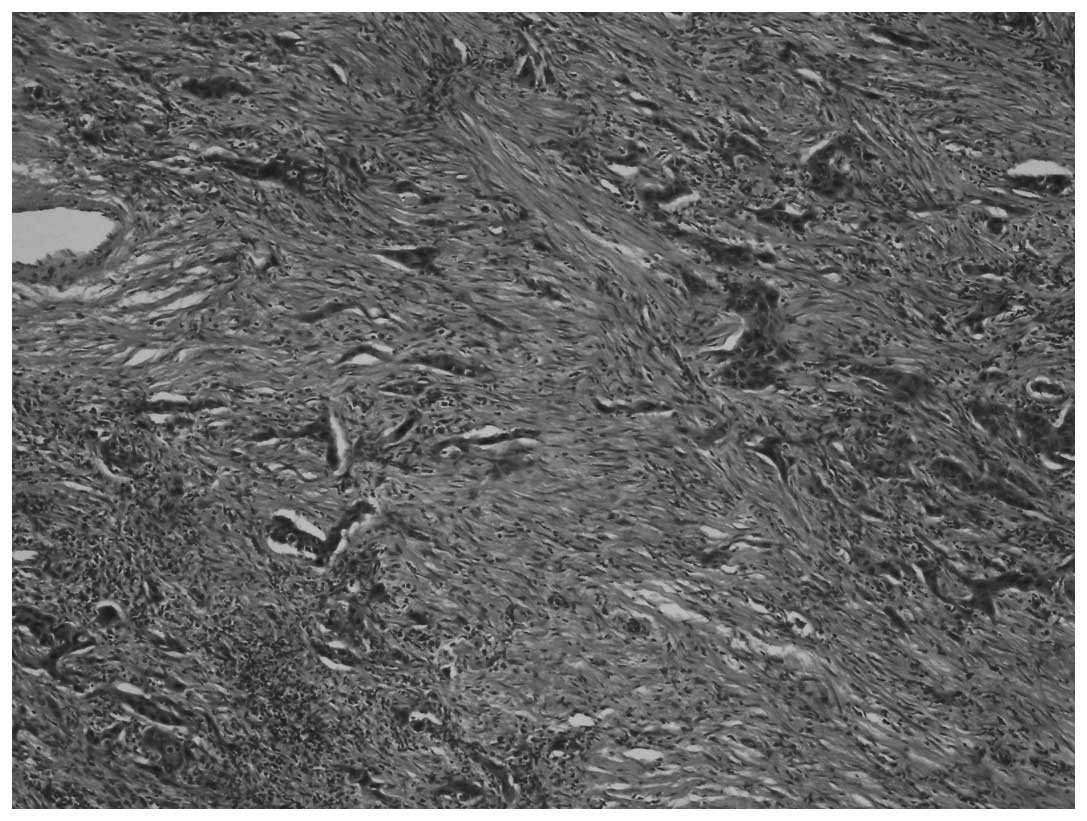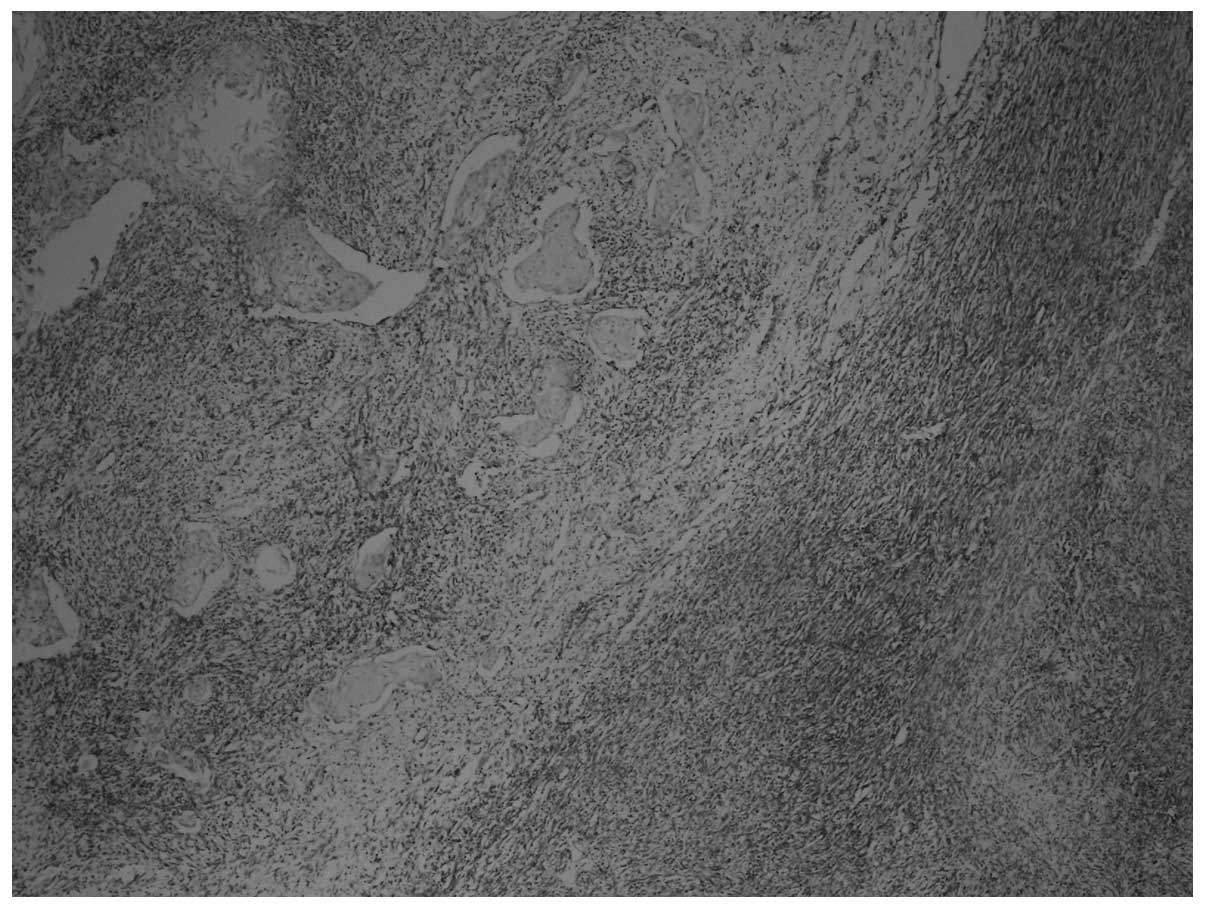Multiple carcinosarcomas of the kidney: a case report and review of the literature
- Authors:
- Published online on: September 5, 2014 https://doi.org/10.3892/mco.2014.411
- Pages: 212-216
Metrics: Total
Views: 0 (Spandidos Publications: | PMC Statistics: )
Total PDF Downloads: 0 (Spandidos Publications: | PMC Statistics: )
Abstract
Carcinosarcomas are biphasic tumors comprising epithelial and mesenchymal components. Primary carcinosarcoma of the kidney is extremely uncommon and accounts for <1% of all malignant renal tumors. Primary carcinosarcoma of the kidney generally occurs after the age of 60 and the majority of the patients are men. This is the case report of a 56‑year‑old male patient who presented with left flank pain. Ultrasonography and computed tomography (CT) revealed ureterohydronephrosis and a left distal ureteral stone (25 mm). renal scan with diethylenetriamine pentaacetate and dimercaptosuccinic acid revealed a non‑functional kidney and a left nephroureterectomy was performed. The pathological examination of the surgical specimen revealed high‑grade multiple carcinosarcomas according to the Union for International Cancer Control and cancer staging according to the tumor‑node‑metastasis classification determined the disease as stage T3aN0M0. At 6 months, the patient was administered systemic adjuvant chemotherapy (CTx) due to widespread lung and liver metastases on 18F‑fluorodeoxyglucose positron‑emission tomography/CT. However, no response was achieved with systemic CTx. the precise histogenesis of this type of cancer has not been determined. Carcinosarcoma of the kidney is a biphasic tumor and its biphasic nature must be confirmed using immunohistochemical methods during pathological diagnosis. The mesenchymal components of sarcomatoid carcinomas must be verified by pathological examination. Metaplastic changes may have malignant potential but should not be considered as malignant lesions. The most significant histopathological parameter that supports the diagnosis of sarcomatoid carcinoma is the identification of transitional zones between the epithelial and mesenchymal cells. Carcinosarcoma is characterized by aggressive malignant potential and a poor prognosis. An effective curative method has not yet been established, with the exception of radical surgery. It is therefore recommended to perform efficient surgical excision with adequate surgical margins.













